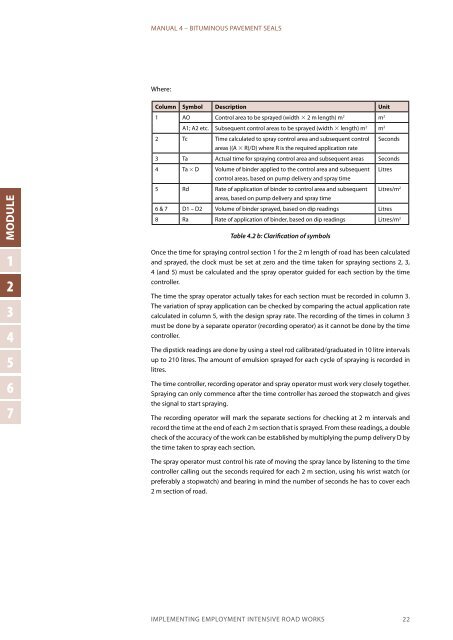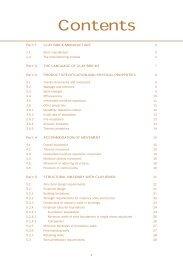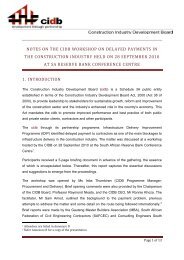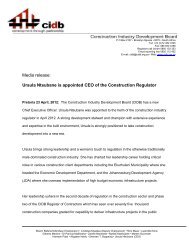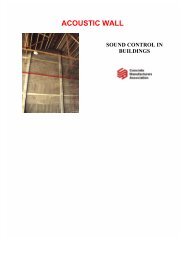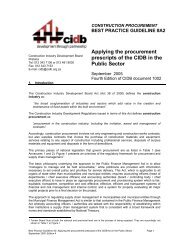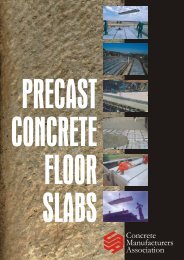MANUAL 4 - Construction Industry Development Board
MANUAL 4 - Construction Industry Development Board
MANUAL 4 - Construction Industry Development Board
Create successful ePaper yourself
Turn your PDF publications into a flip-book with our unique Google optimized e-Paper software.
MODULE<br />
1<br />
2<br />
3<br />
4<br />
5<br />
6<br />
7<br />
<strong>MANUAL</strong> 4 – BITUMINOUS PAVEMENT SEALS<br />
Where:<br />
Column Symbol Description Unit<br />
1 AO Control area to be sprayed (width 3 2 m length) m 2 m 2<br />
A1; A2 etc. Subsequent control areas to be sprayed (width 3 length) m 2 m 2<br />
2 Tc Time calculated to spray control area and subsequent control<br />
areas {(A 3 R)/D} where R is the required application rate<br />
Seconds<br />
3 Ta Actual time for spraying control area and subsequent areas Seconds<br />
4 Ta 3 D Volume of binder applied to the control area and subsequent<br />
control areas, based on pump delivery and spray time<br />
5 Rd Rate of application of binder to control area and subsequent<br />
areas, based on pump delivery and spray time<br />
Litres<br />
Litres/m 2<br />
6 & 7 D1 – D2 Volume of binder sprayed, based on dip readings Litres<br />
8 Ra Rate of application of binder, based on dip readings Litres/m 2<br />
Table 4.2 b: Clarification of symbols<br />
Once the time for spraying control section 1 for the 2 m length of road has been calculated<br />
and sprayed, the clock must be set at zero and the time taken for spraying sections 2, 3,<br />
4 (and 5) must be calculated and the spray operator guided for each section by the time<br />
controller.<br />
The time the spray operator actually takes for each section must be recorded in column 3.<br />
The variation of spray application can be checked by comparing the actual application rate<br />
calculated in column 5, with the design spray rate. The recording of the times in column 3<br />
must be done by a separate operator (recording operator) as it cannot be done by the time<br />
controller.<br />
The dipstick readings are done by using a steel rod calibrated/graduated in 10 litre intervals<br />
up to 210 litres. The amount of emulsion sprayed for each cycle of spraying is recorded in<br />
litres.<br />
The time controller, recording operator and spray operator must work very closely together.<br />
Spraying can only commence after the time controller has zeroed the stopwatch and gives<br />
the signal to start spraying.<br />
The recording operator will mark the separate sections for checking at 2 m intervals and<br />
record the time at the end of each 2 m section that is sprayed. From these readings, a double<br />
check of the accuracy of the work can be established by multiplying the pump delivery D by<br />
the time taken to spray each section.<br />
The spray operator must control his rate of moving the spray lance by listening to the time<br />
controller calling out the seconds required for each 2 m section, using his wrist watch (or<br />
preferably a stopwatch) and bearing in mind the number of seconds he has to cover each<br />
2 m section of road.<br />
IMPLEMENTING EMPLOYMENT INTENSIVE ROAD WORKS 22


